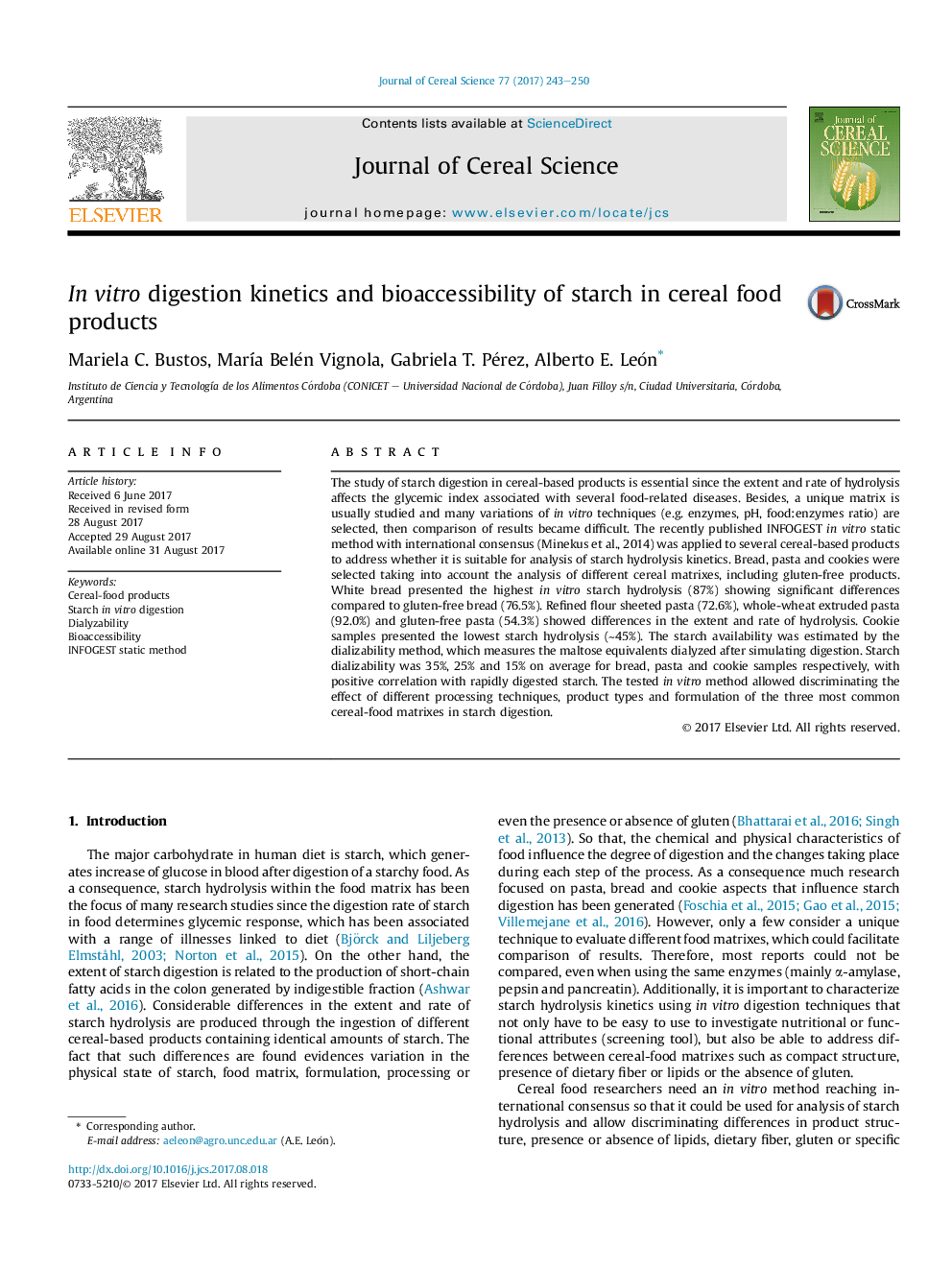| Article ID | Journal | Published Year | Pages | File Type |
|---|---|---|---|---|
| 5762426 | Journal of Cereal Science | 2017 | 8 Pages |
â¢Structure and formulation of cereal foods affect rate and extent of starch digestion.â¢Amylase introduced during oral phase remains active during gastric in vitro digestion.â¢Dialyzability of starch correlated positively with rapidly digested starch.â¢Tested method was suitable to address starch hydrolysis kinetics of cereal-based products.
The study of starch digestion in cereal-based products is essential since the extent and rate of hydrolysis affects the glycemic index associated with several food-related diseases. Besides, a unique matrix is usually studied and many variations of in vitro techniques (e.g. enzymes, pH, food:enzymes ratio) are selected, then comparison of results became difficult. The recently published INFOGEST in vitro static method with international consensus (Minekus et al., 2014) was applied to several cereal-based products to address whether it is suitable for analysis of starch hydrolysis kinetics. Bread, pasta and cookies were selected taking into account the analysis of different cereal matrixes, including gluten-free products. White bread presented the highest in vitro starch hydrolysis (87%) showing significant differences compared to gluten-free bread (76.5%). Refined flour sheeted pasta (72.6%), whole-wheat extruded pasta (92.0%) and gluten-free pasta (54.3%) showed differences in the extent and rate of hydrolysis. Cookie samples presented the lowest starch hydrolysis (â¼45%). The starch availability was estimated by the dializability method, which measures the maltose equivalents dialyzed after simulating digestion. Starch dializability was 35%, 25% and 15% on average for bread, pasta and cookie samples respectively, with positive correlation with rapidly digested starch. The tested in vitro method allowed discriminating the effect of different processing techniques, product types and formulation of the three most common cereal-food matrixes in starch digestion.
